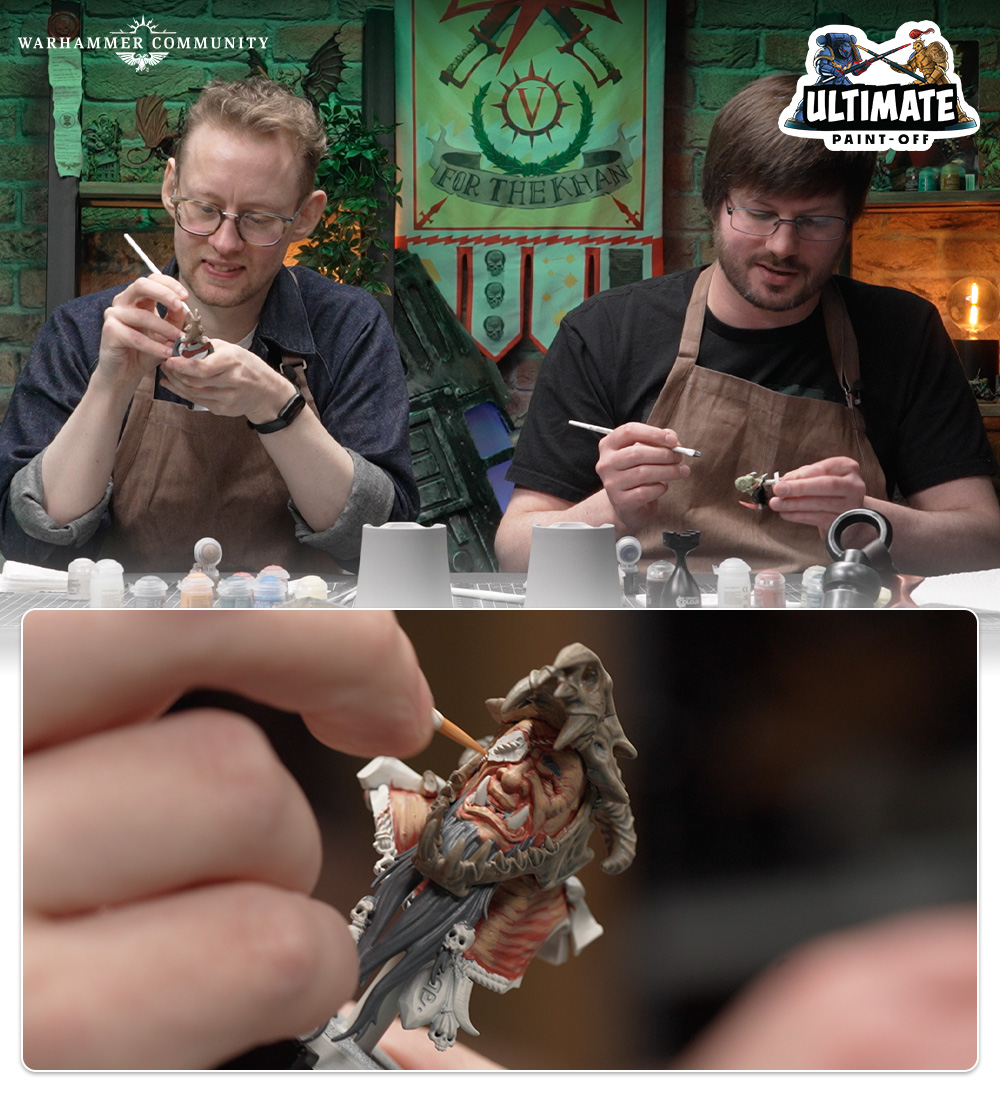Painting is one of the core elements of the Warhammer hobby, whether you love the sight of huge armies of beautifully painted miniatures on the tabletop, or have the ambition to compete in Golden Demon. These two poles are often seen as incompatible, but one member of the Warhammer Community team has found that they can inform each other.
Luke: I returned to the hobby as an adult after playing Total War: Warhammer, and since then I’ve done a lot of painting, playing and reading, amassing a few large armies over the years. With my work on WarCom I’ve had the opportunity to interview a lot of the people from the Warhammer Design Studio and the ’Eavy Metal team, and even paint miniatures for big new boxed sets like Leviathan and Skaventide. Now that I have enough armies ready to go across different games, I’ve felt the pull of painting for display.
Painting miniatures one at a time, free of the expectation of working in an army, gives you a chance to put your all into them, to learn, practice and experiment with a series of advanced techniques.

In order, some of my first attempts at really pushing myself to paint better.
Glazing gets talked about a lot, and it’s a fundamental skill that unlocks top-end painting like no other. It’s the process of thinning your paint with water or medium, applying it to your brush, wicking the excess off on a paper towel, and applying the resulting thin layer to your miniature. You can use it to add soft shading to areas, to create subtle transitions between colours, to knock back sharp highlights, and to tint areas with other colours. It’s an incredibly versatile technique, and hard to master – albeit extremely rewarding when you start to get it.
There is a major downside to this kind of painting – it takes ages. I used to pride myself on being quite a quick painter, and but the harder I push myself, the less I get done. The Warhammer Design Studio nevertheless cruelly refuses to slow production down to a single miniature every month.

Some of my more recent attempts at display painting, the result of refining my glazing and brush control.
The desire to paint everything released is still very strong, and I have picked up my fair share of miniatures that still sit in boxes – and I keep drawing up army projects for every system. Thankfully, practice really does make perfect, and I seem to be speeding up.
For instance, the Loremaster featured in the first WarCom Workbench article only took me a couple of evenings, as my brush control has improved and I am more confident with glazing. Similarly, the Cryptguard were relatively rapid, considering the Flaymaster from the Royal Beastflayers and the Abhorrant Archregent took me around a week each.
These three ghouls are clearly less refined than my best pieces, but the shadows and skin highlights I used would have given me pause a few years ago, yet now they’re second nature. People talk about muscle memory for painting, and they’re not pulling your leg, you really do just learn how to move the brush better over time.

Though unbased, all three Cryptguard took less time combined than my Flaymaster, painted over a year ago – that’s progress!
I have also learned where detail can be skipped and time can be saved. Leather and bone might take hours for a display piece, but unless they’re a major feature of the miniature your time is better spent on focal points like faces, weapons, and fun details like blood-splattered standards and magic fireballs.
Even if you prioritise fielding big armies over detailed painting, I do think it’s worth occasionally pushing yourself as hard as you can on a single project now and then. Get some good references – ’Eavy Metal box art recipes or Golden Demon entries are absolutely ideal – look up a new technique or colour scheme, and settle in for the long haul. Even if you are left feeling like you could do better, you’ll have learned some invaluable skills along the way – and it’s sure to level up your regular painting too.

I spent far more time on these two tiny rats than the Mega-Gargant head I had to paint in today’s episode of Ultimate Paint Off, but both speeds of painting reinforce each other.
My experience was also put to the ultimate test recently on WarhammerTV, when I was given just four hours to paint a Mega-Gargant head in today’s episode of Ultimate Paint Off. I think on average I probably spend at least that long on the head of a Space Marine! Being thrown into a challenge with limited paints and time was a perfect way to test just how much I’ve learned since putting my serious painting hat on a few years ago.

Thanks Luke! You can watch the show on Warhammer+ right now and find out how he got on with this gigantic challenge. If you want to see some more breakneck painting, The Warhammer Painting Team are also no strangers to timed challenges – they managed to paint two Kill Teams in just five days, and recently two even bigger armies in under a week! If you’ve managed a feat of painting in a short amount of time, why not share it with us on social media?












